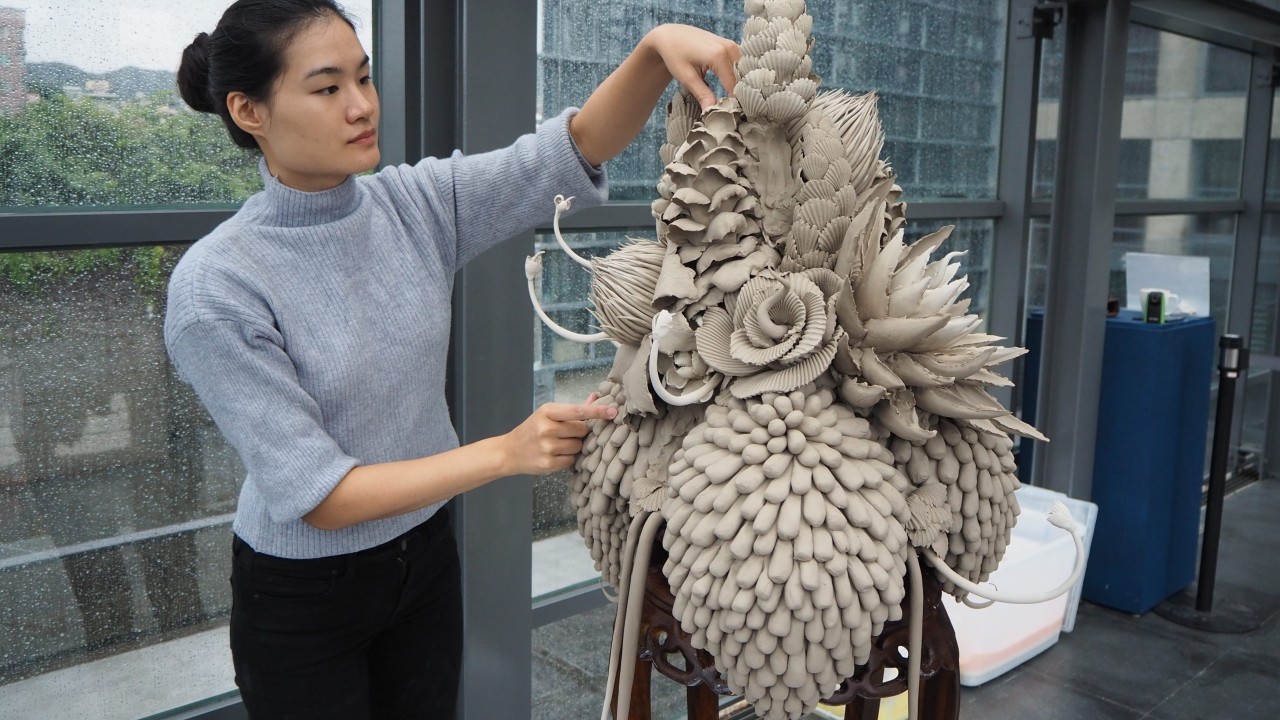Music While We Work
2011 - Film & Video (Film & Video)
Hong-Kai Wang
The video Music While We Work (2011) is the first part/work of a long-term research project started in 2010. The project revolves around and beyond the history of sugar in the small town Huwei in central Taiwan (the artist’s hometown). The town was nicknamed as the “Capital of Sugar” during the Japanese colonial ruling (1895-1945) of Taiwan. Yet, the history of this small town and its pivotal role in the deadly Taiwanese anti-colonial resistance movement is not known or talked about. In 1925, a gathering of sugar planters led up to the historical yet today largely unknown revolt, even unknown among the workers’ generations after the revolt. For this work she assembled a group of retired workers from a Taiwanese sugar refinery in the small industrial town of her childhood (first or second generations of workers after the 1925 revolt). She and her collaborator, the political activist and composer Chen Bo-Wei (Taiwanese, born 1971), led a series of recording workshops for the retirees and their spouses. They then returned to the factory, where Wang asked them to “paint a world composed by their listening.” The video installation is both an account of their collective learning process and the resulting compositions.
Wang is an artist working primarily with sound. Her work investigates ‘listening’ as a conceptual tool to explore social relations and the (re)construction of cultural memory in marginal spaces. Focused on a collaborative and process-driven approach to production, her work spans performance, workshop, text, video and installation.
Colors:
Related works sharing similar palette
» see more

© » ARTSY
The Data Behind Artsy’s Online Art Fair, Foundations | Artsy Skip to Main Content Art Market The Data Behind Artsy’s Online Art Fair, Foundations Arun Kakar Feb 8, 2024 5:39PM Underway through February 14th, Artsy’s online art fair Foundations spotlights 130 tastemaking galleries from more than 35 countries worldwide, united by their ability to uncover fresh and underrecognized artists...
Related works found in the same semantic group
» see more

© » KADIST
Fabien Giraud & Raphael Siboni
2015-In which predicting its past it lives working and dies fighting- Fifth episode of The Unmanned , “La Mémoire de Masse” unfolds during the second Canuts revolts in Lyon in 1834...

© » SOUTH CHINA MORNING POST
Why these ephemeral clay artworks by ceramicist Ruth Ju-shih Li will crumble in front of your eyes | South China Morning Post Advertisement Advertisement Art + FOLLOW Get more with my NEWS A personalised news feed of stories that matter to you Learn more Taiwanese-Australian ceramicist Ruth Ju-shih Li installs an ephemeral clay artwork at the New Taipei City Yingge Ceramics Museum, in Taiwan, in 2019...

© » KADIST
Leonardogillesfleur
2005Of Action 26:15 leonardogillesfleur notes: “There is almost an ice-cream store in every corner of Buenos Aires...

© » KADIST
Virlani Hallberg
2012In collaboration with psychoanalyst and cultural theorist Leon Tan, Receding Triangular Square explores traditional Chinese and Taiwanese modalities of psychological healing as alternatives to dominant Western psychiatric and therapeutic practices...



